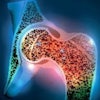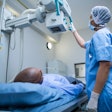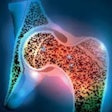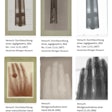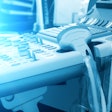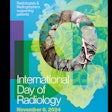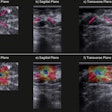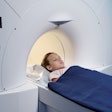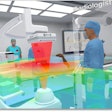
Radiographers can read chest x-rays as well as radiologists, according to a new study published on 30 April in Academic Radiology.
The finding is good news for busy departments: Since chest x-rays are one of the most common imaging exams -- and are key to many patient care protocols -- allowing radiographers to read them could streamline workflow, noted the team led by Nick Woznitza, PhD, of Homerton University Hospital and Canterbury Christ Church University in London.
"With appropriate postgraduate education, reporting radiographers [could] interpret chest x-rays as a level comparable to consultant radiologists," Woznitza and colleagues wrote (Acad Radiol, 30 April, 2018).
No difference?
New and emerging technologies, as well as a growing and aging patient population and more treatment options, are boosting the demand for clinical imaging, according to the study authors. And in the U.K., it's been difficult to keep up. That's why training radiographers to read chest x-rays could be helpful.
 Nick Woznitza, PhD.
Nick Woznitza, PhD."Radiographer reporting, particularly skeletal reporting, has become widespread across the U.K., and in many departments, it provides a significant contribution to reporting capacity," the team wrote. "Promising results have been reported in two studies that have explored the accuracy of radiographer reporting of chest x-rays: one in an academic setting and the other in clinical practice."
To investigate the diagnostic accuracy of chest x-ray interpretation by reporting radiographers, Woznitza and colleagues included a cohort of 10 consultant radiologists and 11 reporting radiographers who read 106 adult chest x-rays that contained a range of pathologies. There was an equal amount of normal and abnormal cases (53 each); the image bank included 121 lesions.
The team then determined the figure of merit (i.e., area under the curve) from jackknife alternative free-response receiver operator characteristics (JAFROC) analysis to compare each group's performance. Figure of merit was calculated both as weighted and unweighted; weighted analysis accounted for the clinical importance of each lesion. The team assessed the performance of the two cohorts using a noninferiority approach -- that is, whether the accuracy of the reporting radiographers was no worse than that of consultant radiologists.
The researchers did find that the diagnostic accuracy of the radiographers reading chest x-rays showed no significant difference compared with the consultant radiologists.
| Diagnostic accuracy of radiologists & radiographers reading chest x-rays | |||
| Figure of merit (JAFROC analysis) |
|||
| Practitioner | No. of cases read | Unweighted | Weighted |
| Radiologist | 1,055 | 0.788 | 0.786 |
| Radiographer | 1,158 | 0.828 | 0.83 |
Chest x-rays are not only complex but crucial to patient care -- making the study findings all the more promising, the authors noted.
"[Our] study shows that reporting radiographers and radiologists demonstrate similar levels of diagnostic reporting accuracy for chest x-ray interpretation," the team wrote. "Reporting radiographers could contribute as part of a sustainable strategy to meet additional clinical demand and diagnostic capacity requirements."
To read more about the group's research, including in the area of clinical practice evaluation, click here and click here.



